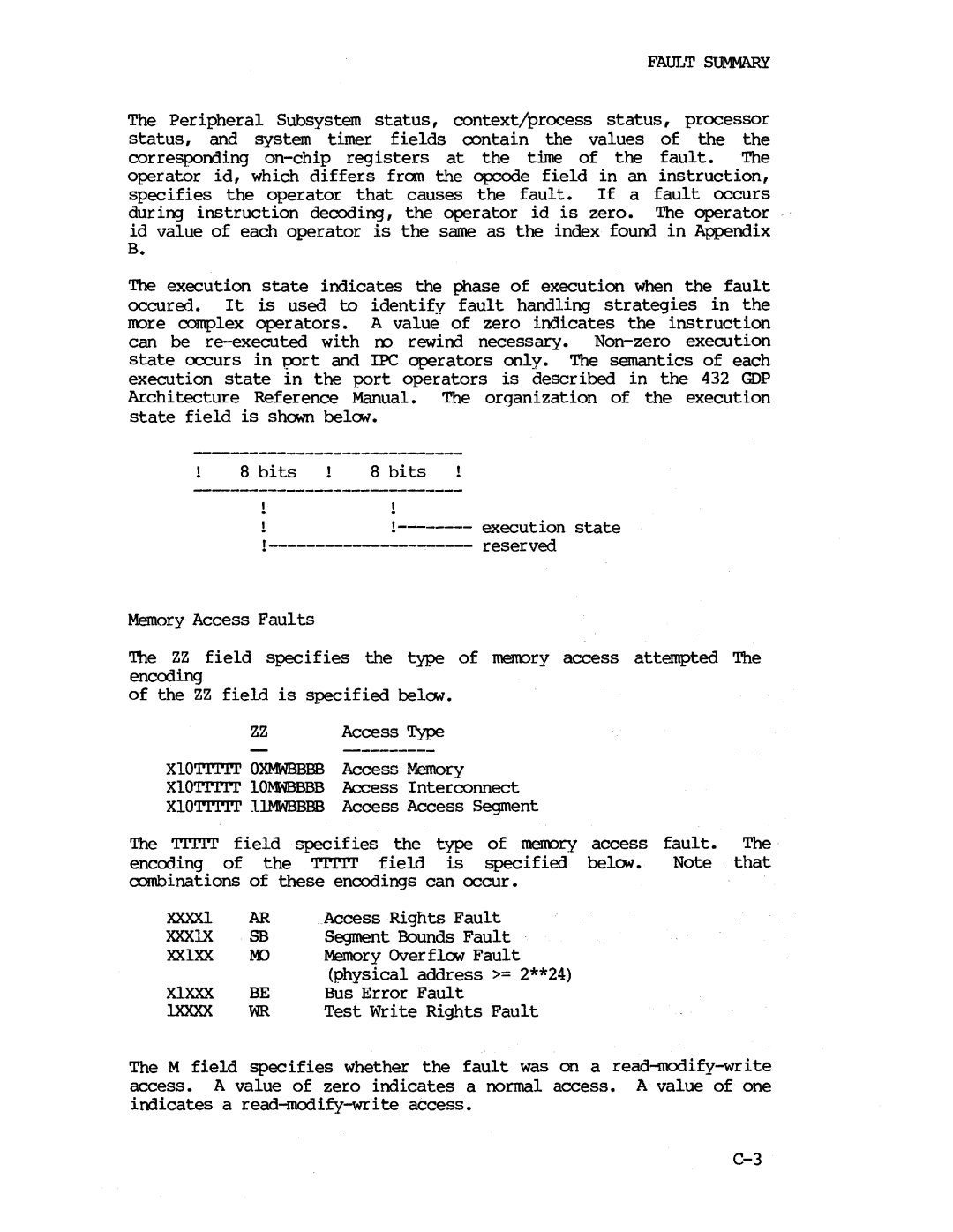
FAULT SUMMARY
The Peripheral Subsystem status, context/process status, processor status, and system timer fields contain the values of the the
corresponding
B.
The execution state indicates the phase of execution when the fault occured. It is used to identify fault handling strategies in the nnre complex operators. A value of zero indicates the instruction can be
8 bits | 8 bits |
execution state reserved
Memory Access Faults
The ZZ field specifies the type of menory access attempted The encooing
of the ZZ field is specified below.
ZZAccess Type
XIOTITl'I' OXMWBBBB Access Memory
XIOTITl'I' lOMWBBBB Access Interconnect
XIOTITl'I' llMWBBBB Access Access Segment
The TITl'I' field specifies the type of mennry access fault. The
encoding of the TITl'I' field is specified below. Note that combinations of these encodings can occur.
XXXXI AR _Access Rights Fault
XXXlX SB Segment Bounds Fault
XXIXX M) Memory Overflow Fault
(physical address >= 2**24)
XIXXX BE Bus Error Fault
lXXXX WR Test Write Rights Fault
The M field specifies whether the fault was on a
